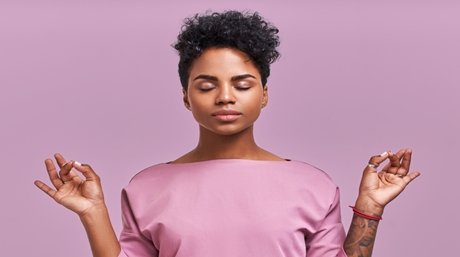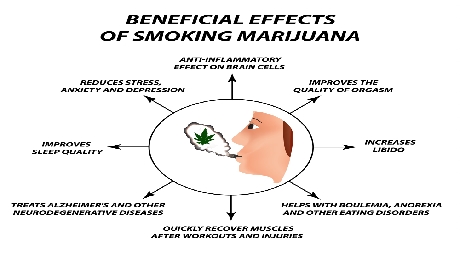At the end of the day all you really want to do is crawl into your bed and fall asleep….fast. Unfortunately for millions of people with sleep disorders that is something that just doesn’t happen. A sad pattern forms where you toss and turn for seemingly hours only to give in and watch old episodes of Weeds, eventually falling asleep, and waking up the next morning with the TV still blaring.
Many people have used marijuana to turn a new leaf and start sleeping better. Now it seems that their pattern is more like crawling into bed, hitting the bong, and minutes later in lala land. Cannabis can be a great sleep aid, but it’s important to understand how cannabis affects your sleep to decide if it’s right for you.
There are four stages of sleep. Three of these stages are NREM (non-rapid eye movement) stages. The fourth stage is called REM (rapid eye movement). It’s during the REM stage that you dream. Throughout the night these stages progress cyclically from one through REM and then it repeats again starting from stage one.
Marijuana affects not only the duration of some stages but also the intensity. During the first stage of sleep is when the body transitions into a comfortable sleep. For people that suffer from chronic diseases and pain this can prove to be very difficult, and they often don’t get adequate hours of deep sleep that promote the healing process.
According to a study done on people with chronic pain and diseases found that their quality of sleep improved when they took drugs containing cannabis. Furthermore, it was noted in the study that there wasn’t a decrease in the effect of the cannabis drug used after 4 years of beginning the treatment, so there didn’t need to be an increase of dosage. It’s no surprise that people with pain taking cannabis fall asleep faster since marijuana has shown to relieve pain.
During the second stage of sleep you can easily be woken up. Seemingly, this sleep cycle is the least affected by marijuana.
The third stage is lengthened when the sleeper uses marijuana. It’s during this stage that slow wave sleep is induced and deep sleep happens. Your body is best repaired during this cycle.
Finally REM takes place. During this cycle your brain gets refreshed. When you smoke marijuana this cycle becomes less effective. This is why you may have less frequent and less vivid dreams when you smoke before sleep. If you decide to take a break from smoking before bed then you can get REM rebound in which you probably will get really vivid and lucid dreaming.
Because REM sleep is reduced with nighttime cannabis use, many people with post-traumatic stress disorder (PSTD) find that a cannabis nightcap helps them cope better with their disorder. They have less nightmares, or at least less vivid nightmares, that disrupt their sleep and daily lives.
Another disorder that nighttime marijuana use can aid is sleep apnea. Since most disturbances associated with sleep apnea occur during REM sleep, when REM sleep is shortened then the disturbances are also reduced. A study published in 2013 found that the THC in cannabis reduced “spontaneous sleep-disordered breathing, and blocks serotonin-induced exacerbation of sleep apnea.”
Some people report getting a “hangover” after using cannabis at night. I don’t mean you’ll be head deep in the toilet wishing you were dead type of hangover. I mean some people feel a bit groggy, lethargic, or dehydrated the morning after having a cannabis nightcap. This could be due to the grade of marijuana smoked. If this happens to you try switching to pesticide-free, high grade marijuana that has been tested. To combat the hungover feeling treat it like a normal hangover: drink plenty of water, eat your fruits and veggies, and get some exercise.
So, at this point you can decide if a cannabis nightcap will work for you. Smoking weed at night will restore your body more physically. However, you may notice that you mind becomes foggy, so make sure to find a good balance.
If you’re going to give nighttime smoking a chance then know that aged marijuana makes you sleepier. As THC ages, it gets converted into CBN, a sedating chemical. So, before you toss out that old weed that’s been boxed up with all your old college stuff, puff it at night and sing yourself a marijuana lullabye. If you don’t have any old weed, but still need a good night’s sleep, then opt for an indica strain.
Looking for a low THC strain? buy our BIG BUD strain now
1. How does marijuana affect the different stages of sleep?
Marijuana can lengthen the third stage of sleep, which is crucial for deep, restorative sleep, but it reduces the REM stage, leading to fewer dreams and potentially aiding conditions like PTSD and sleep apnea.
2. Can marijuana help with sleep disorders?
Yes, marijuana can help with sleep disorders by promoting deeper sleep and reducing pain, nightmares, and sleep apnea disturbances, making it easier for individuals to fall and stay asleep.
3. Are there any side effects of using marijuana for sleep?
Some people may experience a “hangover” feeling in the morning, characterized by grogginess or lethargy. This can often be mitigated by using high-quality, pesticide-free marijuana and maintaining good hydration and nutrition.
Disclaimer: The content provided in AMS blog articles, including those related to medical seeds, is strictly for informational and entertainment purposes only. It is not intended to be taken as medical advice. For any medical concerns or questions, we strongly recommend consulting with a qualified healthcare professional. Your health and well-being are important, and a healthcare provider can offer personalized advice and guidance based on your specific needs.













Related Posts

Multiple cannabis strains are known to have a stress-reducing effect. See here which strains make you feel relaxed.

Anno 2019, many people still believe that smoking weed will turn you into a red-eyed, unemployed psychopath for life. But with many different American states decriminalizing the herb for personal use, this has the change to study what cannabis does on a mass scale. Some of the studies have been scientifically proven whereas other haven’t been scientifically proven yet as it is still illegal in many places.

In this article, we will examine the science behind CBD’s alleged relaxation-enhancing properties.